hort exam 2
1/62
Earn XP
Name | Mastery | Learn | Test | Matching | Spaced |
|---|
No study sessions yet.
63 Terms
What are the 3 basic types of cells in plants? Differentiate between them
Parenchyma, Collenchyma, and Sclerenchyma
What is a cell wall made of? What does it do?
They are made of mainly cellulose. They provide filler, structure, support, and protection
Where is the pectin in a plant?
The pectin is in the cell wall (middle lamella). It holds plant cells together and is used as a gelling agent for jams and jellies.
What does the plasma membrane (or plasmalemma) do? Is it attached to the cell wall?
a double membrane that surrounds the cytoplasm. not attached to the cell wall!!
How do cells connect/communicate with one another?
cell to cell interconnections are made by cytoplasmic strands
What is the cytoplasm?
everything in the cell except for the organelles
What is in the nucleus and never leaves?
Eukaryotic DNA never leaves but is instead copied into RNA
What is a chloroplast? What happens here?
they are green plastids that contain chlorophyll. It is the site of photosynthesis
What does the ER and rough ER do?
Endoplasmic reticulum (ER) are tubular membranes for communication across the cytoplasm. It is the site of protein synthesis. ER has no ribosomes and rough ER does.
What does the vacuole do?
They are cavities in cells that contain a liquid called vacuolar sap or cell sap. They store organic acids, salts, anthocyanins (blue, purple, red), metabolic wastes, enzymes and metabolites.
What is DNA and how does it differ from RNA?
DNA = double helix chain of sugar-phosphates
(deoxyribo-sugar-phosphates) connected by nucleic acids
RNA = a single stranded chain of sugar-phosphates (ribo-sugar-phosphates) containing nucleic acids
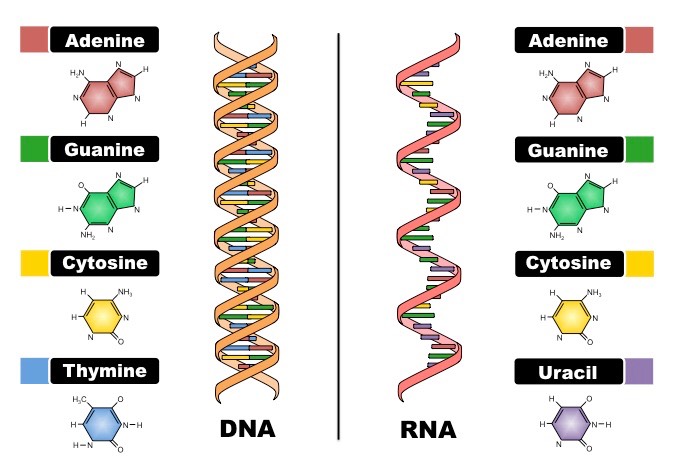
Identify the base pairs of DNA and RNA
DNA = adenine+thymine and guanine+cytosine
RNA = adenine+uracil and guanine+cytosine
Describe the process of transcription and translation
Transcription= The process by which DNA is copied to RNA
Translation= RNA is used to produce proteins
Why are plants propagated asexually?
Plants with desirable traits can be generated from a single plant.
asexual propagation techniques of cuttings (stem, root and leaf)
cutting off a piece of a plant and placing it in conditions where it becomes self sustaining and develops its own roots (in water or in soil). Must form adventitious roots.
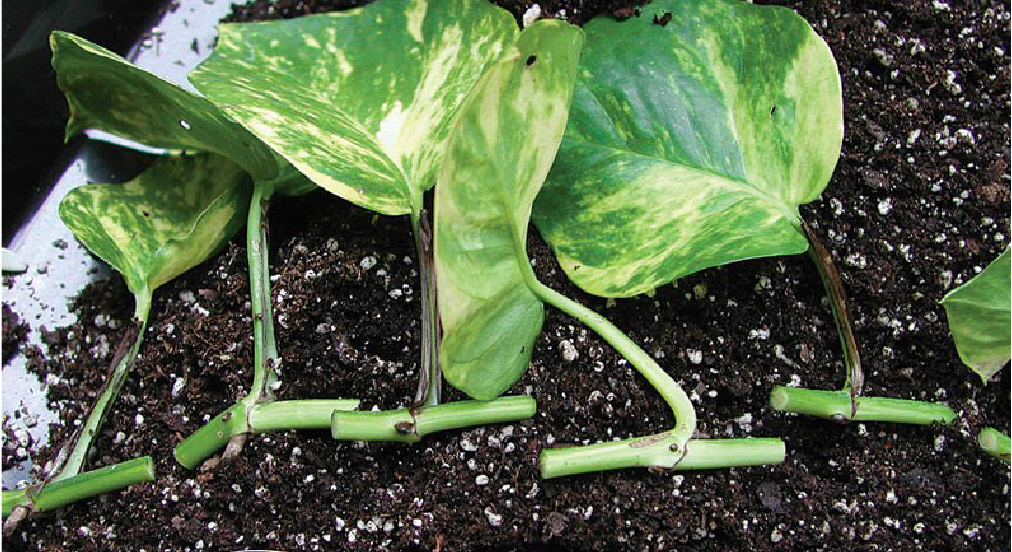
asexual propagation techniques of layering
Propagation technique where roots are formed prior to the stem being removed from the parent plant. also can be done with air layering. must form adventitious roots.

asexual propagation techniques of grafting and budding
Grafting and budding: joining parts of plants so they continue growth as one plant. Calluses must form on wounds so the plant is whole and fully connected
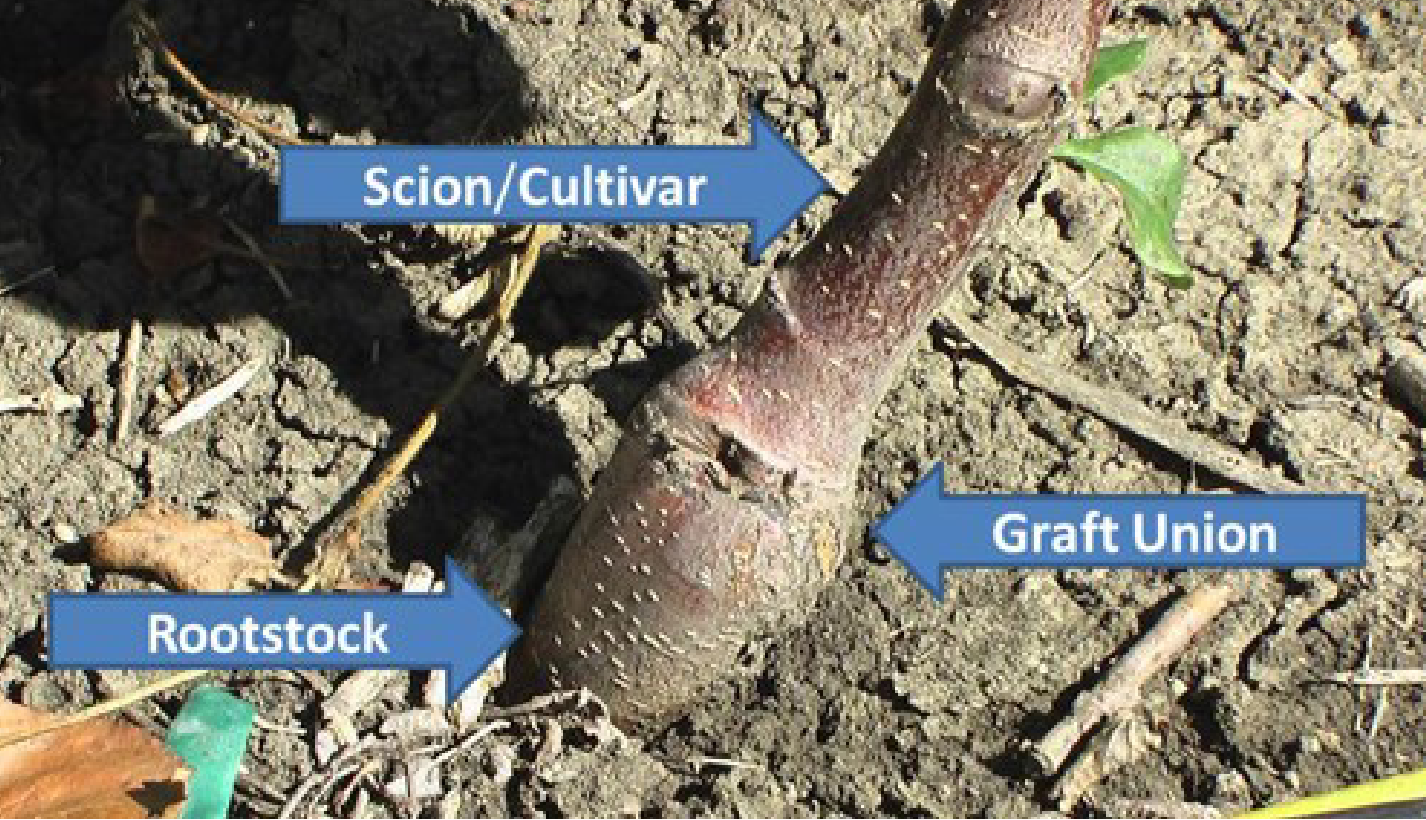
asexual propagation techniques of division
Dividing the roots of a large plant and separating it into multiple small ones. Must form shoots and adventitious roots.
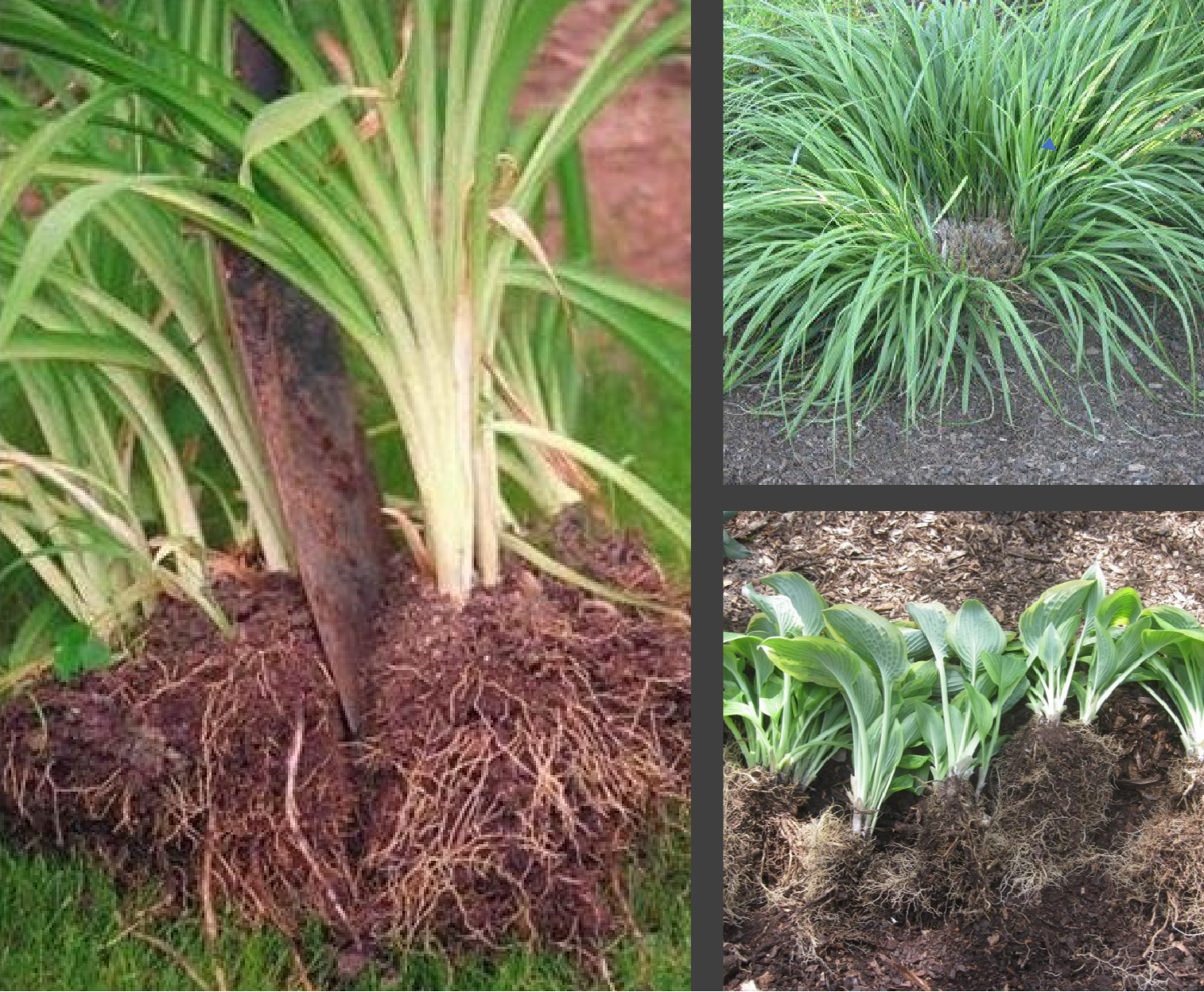
asexual propagation techniques of micropropagation
Small pieces of plant tissue grown on sterile
media under aseptic conditions. Must grow in unnatural environment
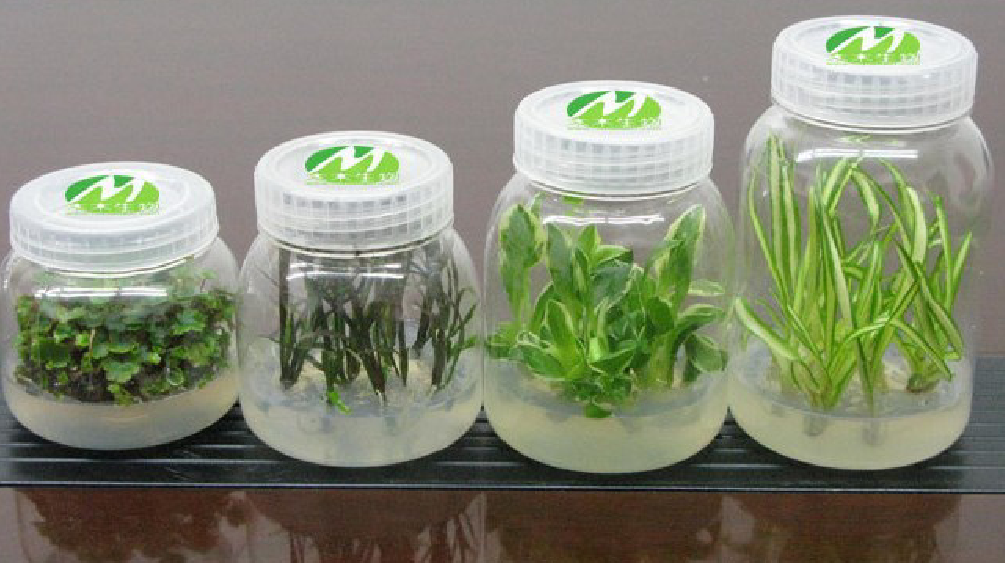
What is a chimera?
A mixture of two or more variations of plant DNA within one plant.
What factors affect the success of grafting and budding?
the maturity and size of the graft sample to the tree
What does it mean for bark to "slip"?
when cut, the bark easily lifts or peels in one uniform layer from the underlying wood without tearing
Define scion and rootstock.
Rootstock is the base and root portion of grafted plants
A scion, the flowering and/or fruiting part of the plant, is grafted onto rootstock
What types of grafts can be used to repair damage to trees?
inarching, bridge grafting, and brace grafting
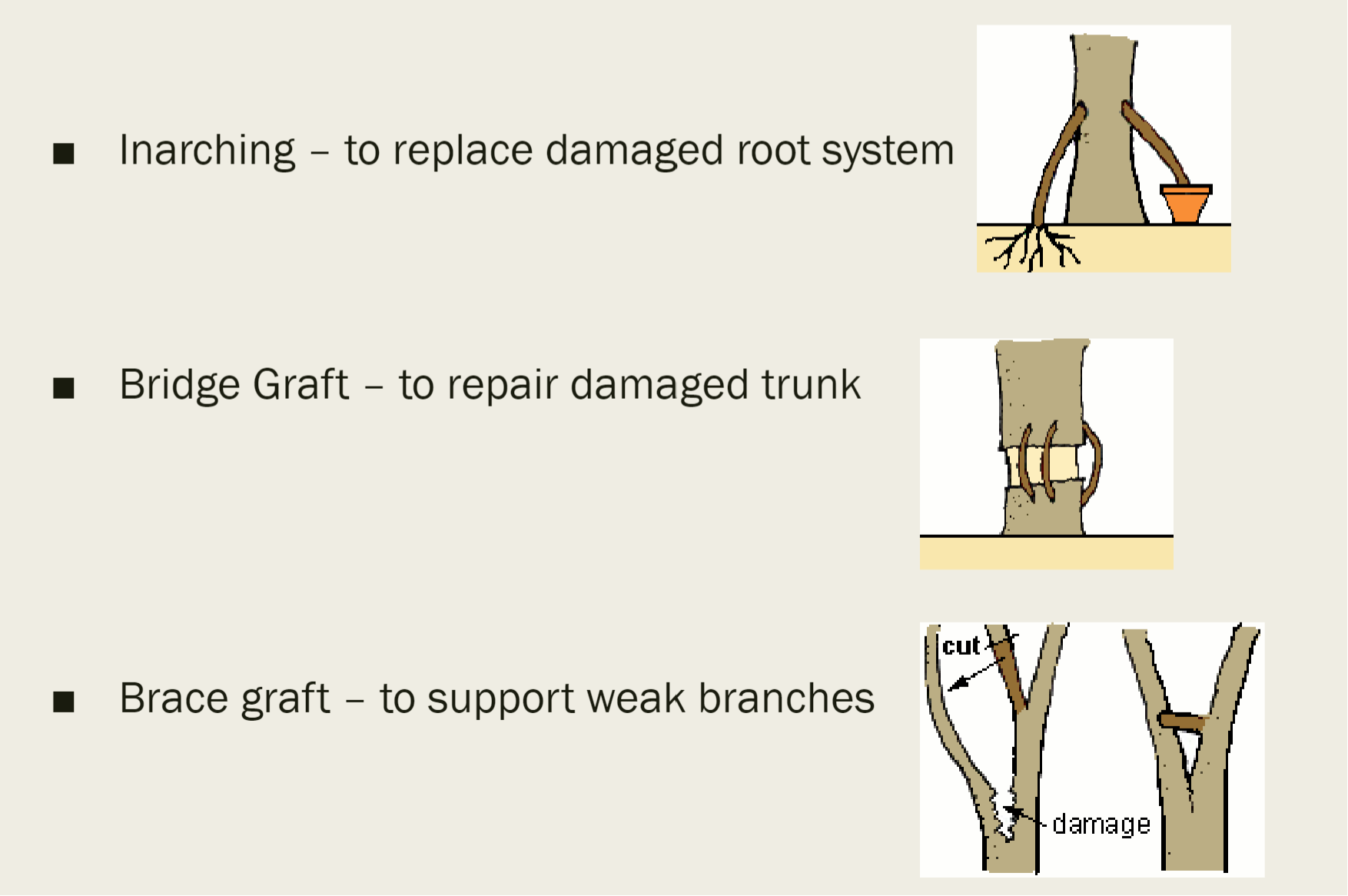
What types of grafts can be used if the scion and rootstock are about the same size?
whip or tongue graft, splice graft, and saddle graft
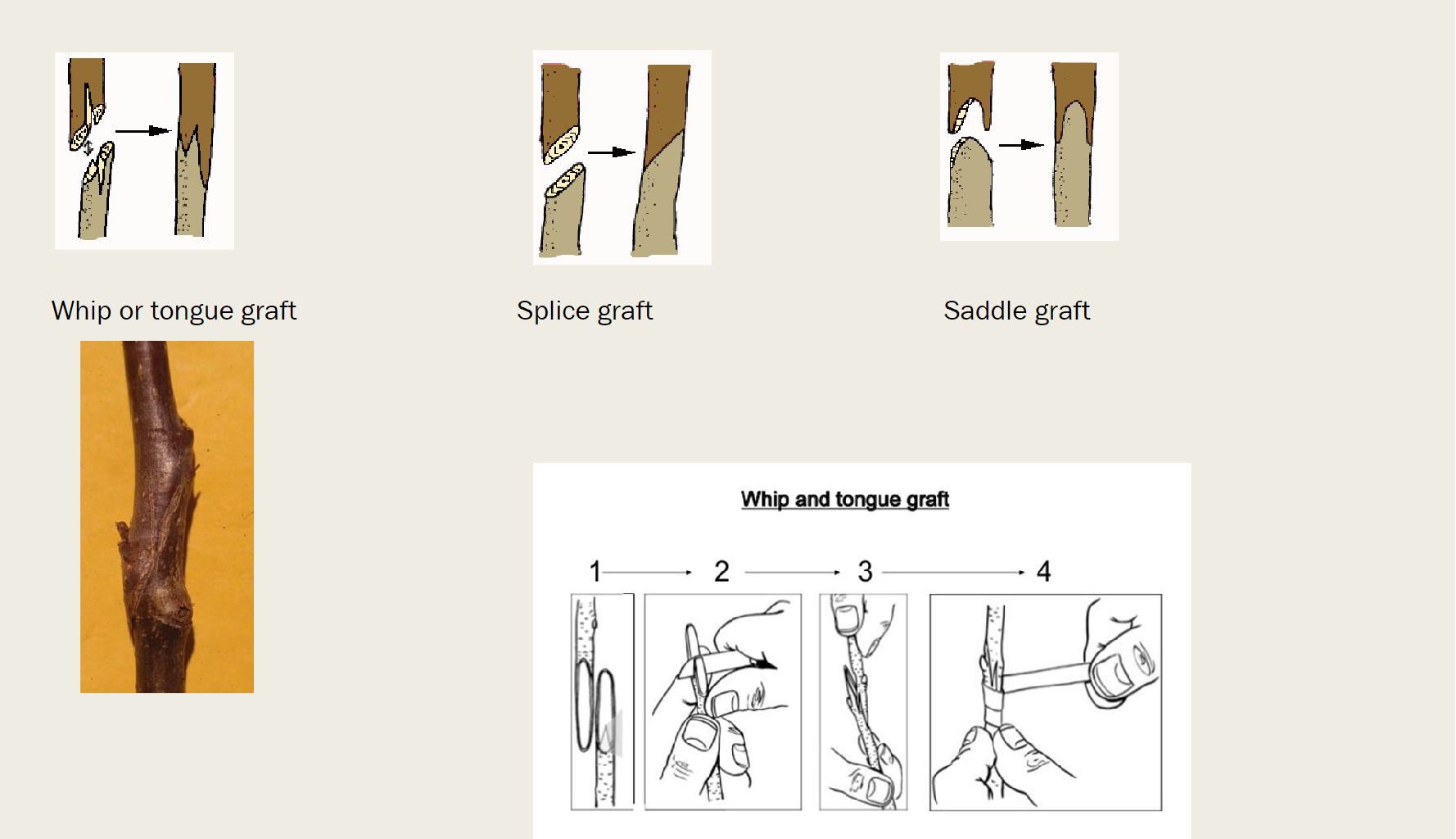
What types of grafts are used if the scion is smaller than the stock?
side grafting, cleft grafting, notch (wedge, or saw-kerf) grafting, bark or inlay graft, approach graft, and topworking
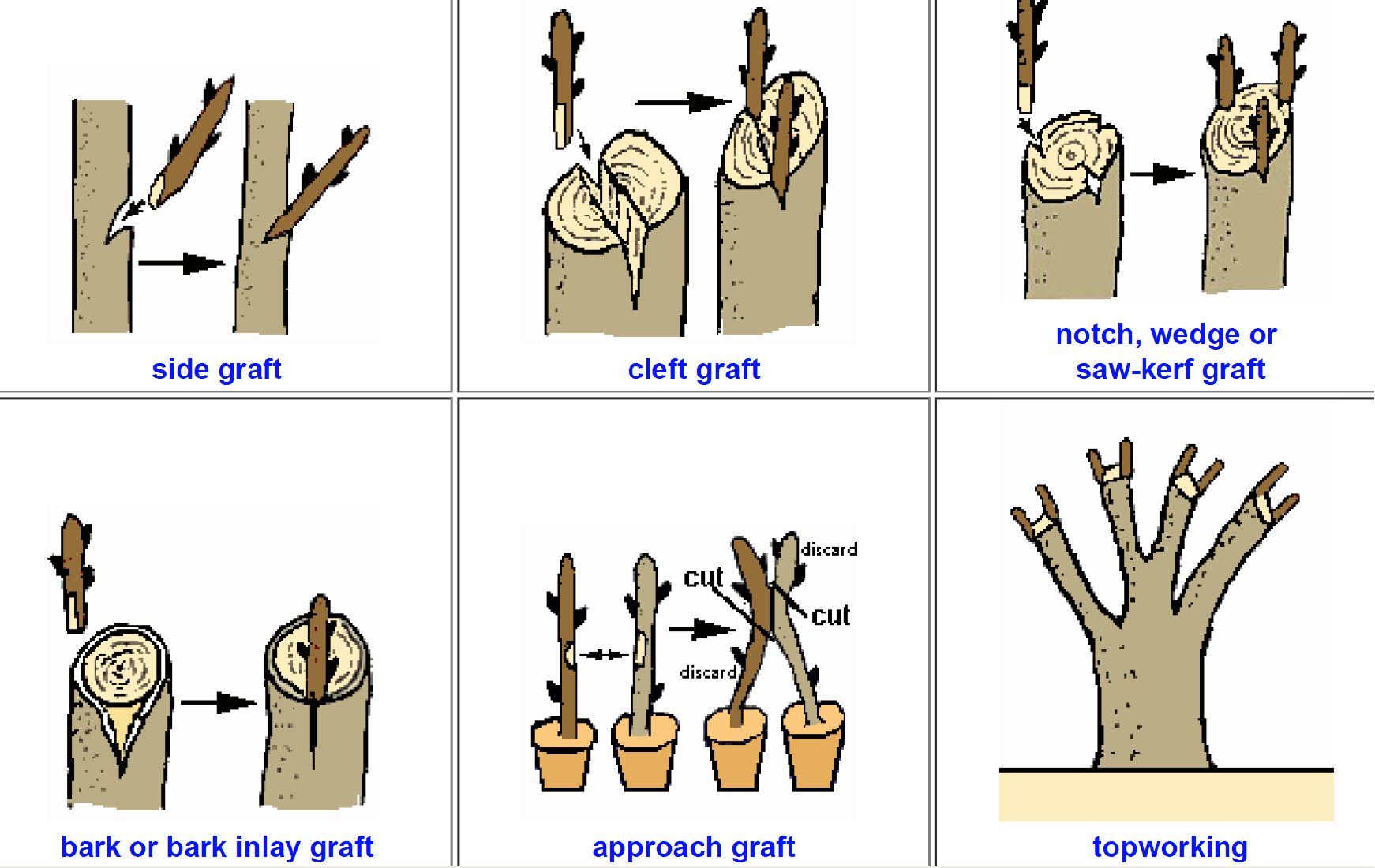
What does it mean for bark to "slip"?
Slipping means that, when cut, the bark easily lifts or peels in one uniform layer from the underlying wood without tearing
What types of grafts are used if the bark is slipping?
T-bud, inverted T-bud, I-bud, patch bud, ring bud, flute bud. basically taking off the outer layer of bark and putting it on the new tree
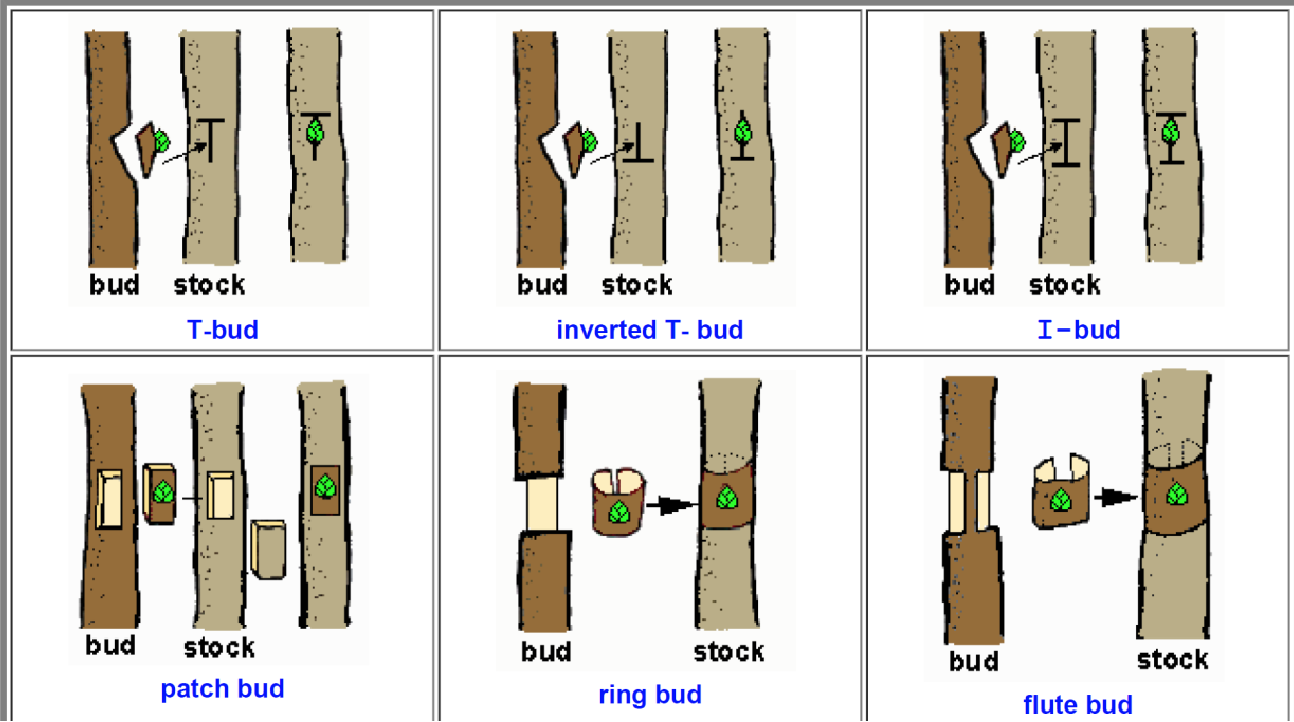
What types of grafts are used when the bark is not slipping?
chip bud- taking a chunk out of the tree and placing it in a new tree
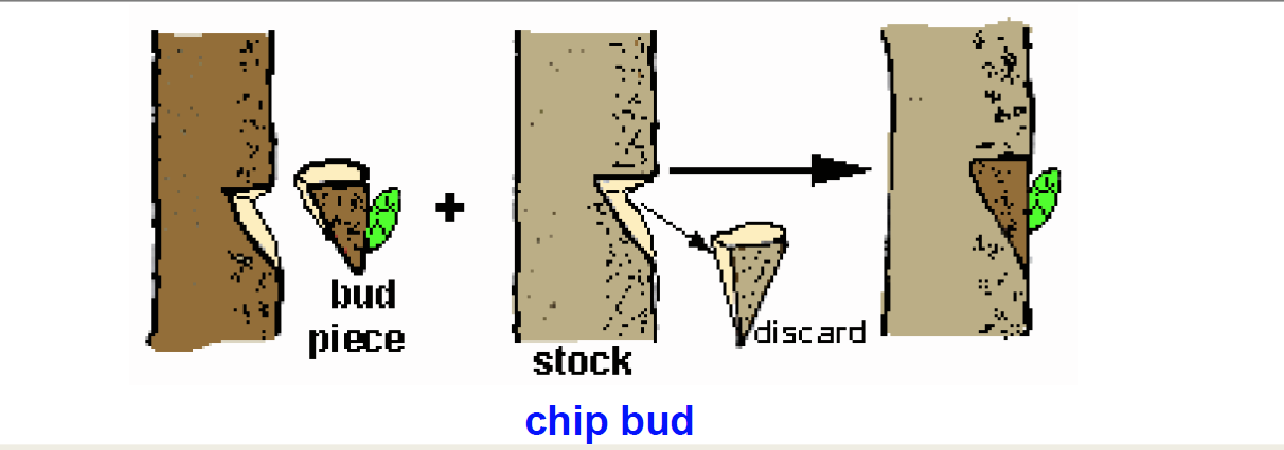
What is micropropagation? Why is it used?
Small pieces of plant tissue grown on sterile
media under aseptic conditions. Plants grow rapidly, have a higher chance of producing a seed, and have less disease transmission
Know the advantages and disadvantages of sexual propagation of horticultural plants
advantages- produces large numbers in a short amount of time and with high variation
disadvantages- unpredictable numbers of seed production and difficult to germinate
Understand self- and cross-pollination in plants.
Self-pollination occurs when the pollen from the anther is deposited on the stigma of the same flower or another flower on the same plant. (self-pollination on the same plant)
Cross-pollination is the transfer of pollen from the anther of one flower to the stigma of another flower on a different individual of the same species. (pollinating a different plant)
Describe double fertilization. What types of plants undergo double fertilization?
union of one male gamete (1N) with one female gamete (1N) to produce a zygote (2N), plus the union of one male gamete (1N) with two polar nuclei (1N each) to produce an endosperm (3N); occurs only in angiosperms (flowering plants)
Ploidy
the number of sets of chromosomes present in the nucleus of the cell (also study the picture!!)

zygote
a fertilized egg; half of the chromosomes from egg (female) and half from pollen (male)
embryo
zygote develops into the embryo of the seed: which a small hybrid embryonic plant
apomixis
development of an embryo without fertilization; hence; it is not true sexual propagation even though it produces a seed; Citrus is a noted example
vivipary
germination of seeds inside the fruit while still attached to the parent plant
Compare quiescence and dormancy.
quiescence- state of suspended growth of the embryo or a resting condition (needs water)
dormancy- state that requires a special event or “trigger” before the embryo can resume growth (needs fire, scarification, cold)
Define stratification and scarification.
stratification- Requires seeds to be stored in a moist, aerated medium at chilling temperatures for
a certain period of time
scarification- Physical or chemical abrasion of seed
coat. Seeds will not imbibe water until the
outer layer of cells are treated
Describe the stages of seed germination.
study this picture!!
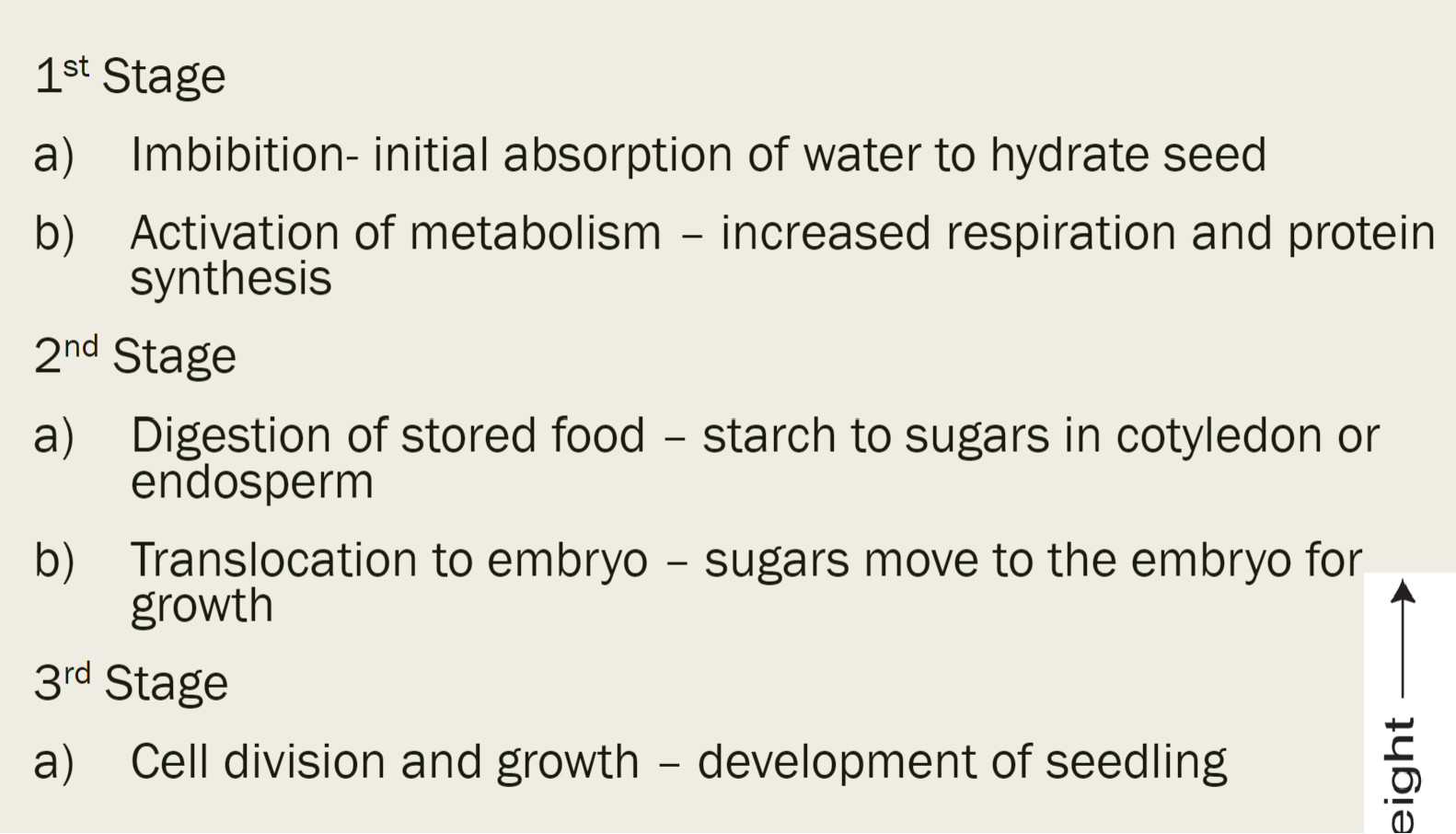
List four environmental factors that affect seed germination and how each impacts seed germination.
temperature, light, soil moisture, and pH levels
Explain the plant hardiness zone maps
plant hardiness zones are based on average minimum temperature. There are 13 zones that are divided evenly into 10 degree increments
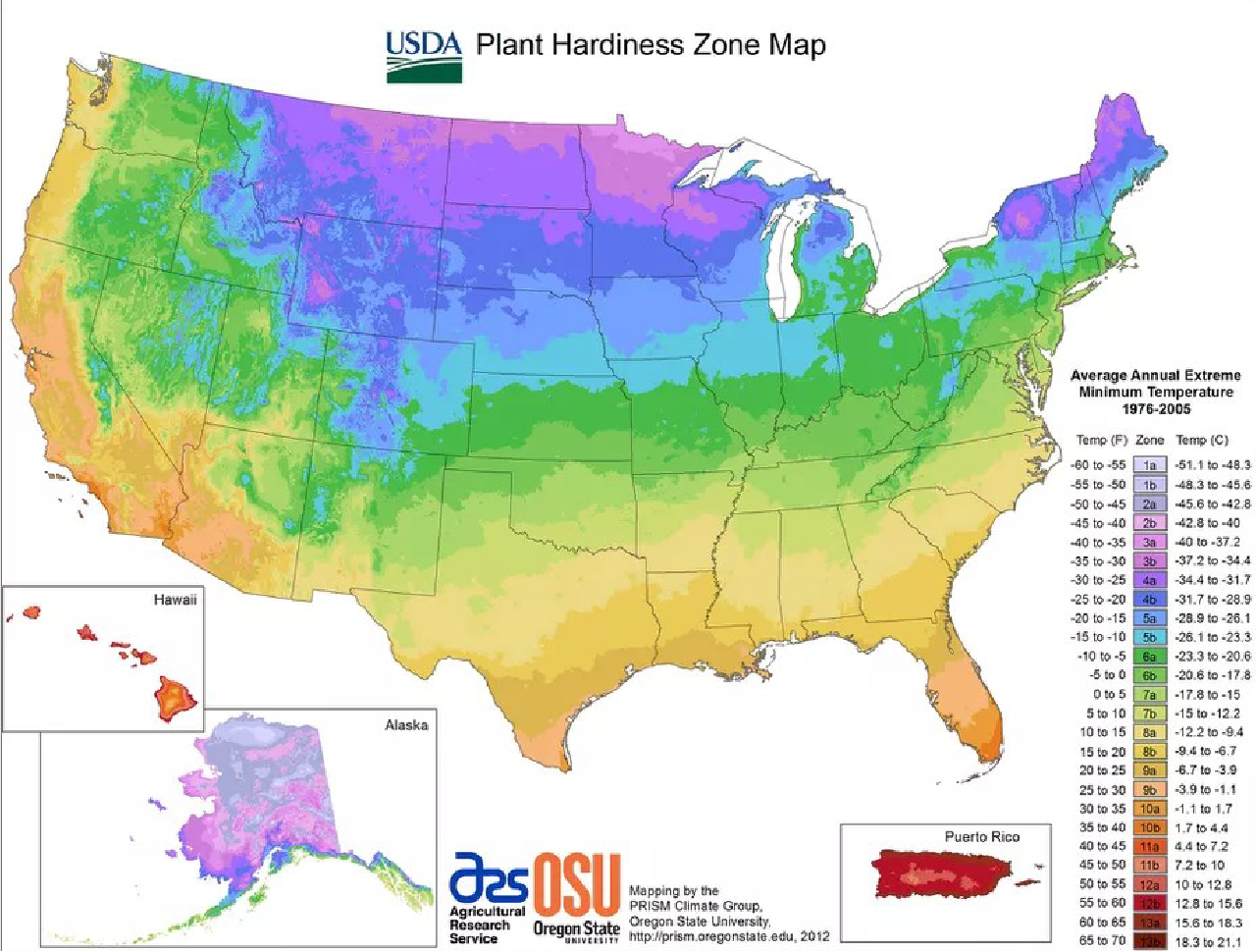
Describe a microclimate and how it may be created in a landscape
A microclimate is the distinctive climate of a small-scale area, such as a garden, park, valley or part of a city. Environmental factors such as mountains, rocks, or wind affect each microclimate differently.
Compare chilling, freezing and frost
chilling- Injury that occurs ABOVE freezing; 32-50 degrees F (0-10 degrees C)
freezing- Injury that occurs below 32 degrees F
(0 degrees C). Freezing injury can occur in absence
of frost
frost- Frost can occur when air temperature is above freezing (38 degrees F)
Explain a heat day and the heat zone map
Based on the average number of days over 86 degrees F. 86 degrees F is point plants often begin to experience physiological damage
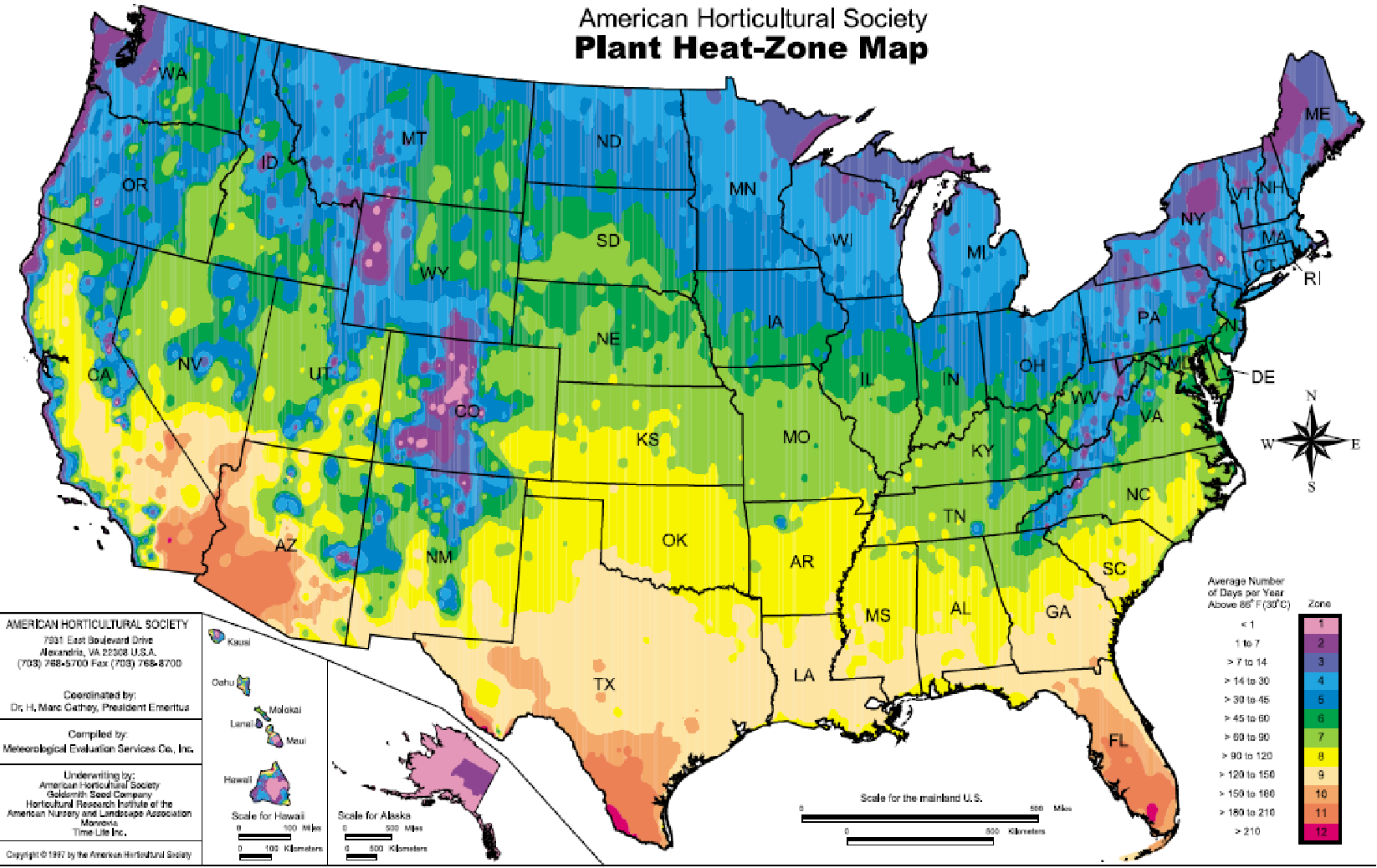
Understand the processes of photosynthesis (Pn) and its equation
photosynthesis- Harvesting of light energy and conversion into a usable chemical form of energy (glucose) = CONVERSION and STORAGE of energy.

understand respiration (Rs) and its equation
respiration- Use or oxidation of stored carbon compounds (glucose) to provide energy for growth and
plant maintenance = USE of STORED ENERGY
forms ATP

understand photorespiration
photorespiration- Reduction in carbon fixation capability seen in C3 plants when internal leaf oxygen levels increase = inefficient photosynthesis
Know the inputs and outputs for both the light and dark reaction of Pn
light- light/ water —> oxygen
dark- carbon dioxide —> carbohydrates
Compare Pn (light and dark reactions) to Rs including where they occur
Photosynthesis converts carbon dioxide and water into oxygen and glucose. occurs in the chloroplast
Cellular respiration converts oxygen and glucose into water and carbon dioxide. occurs in the cytosol and mitochondria
Where in the leaf does most photosynthesis occur?
Chloroplasts are concentrated in palisade layer. Upper 40% of the cross section of a leaf
Be able to discuss what transpiration is and how it is impacted by the environment
Water loss from a plant, mostly through stomata. Transpiration rates are higher when the relative humidity of air is low, which can occur due to windy conditions or when the temperatures are high
Define evapotranspiration
the process by which water is transferred from the land to the atmosphere by evaporation from the soil and other surfaces and by transpiration from plants
Understand and be able to discuss translocation in plants
the movement of materials from leaves to other tissues throughout the plant
Be able to list the three carbon fixation pathways (C3, C4, and CAM) and explain the differences between each
C3- most plants, ex. Tropical foliage plants, tomatoes, apples
C4- Some grasses, ex. Corn, sorghum
CAM- Many desert plants, succulents, cacti
Know the environmental factors that affect Pn and Rs.
light quality and quantity, ambient CO2 concentration, temperature and water availability
Describe the composition of a mineral soil
sand, silt, and clay
Be able to identify the mineral class of a soil using the soil triangle
The numbers and lines on the triangle dictate the % of sand, silt and clay in the soil
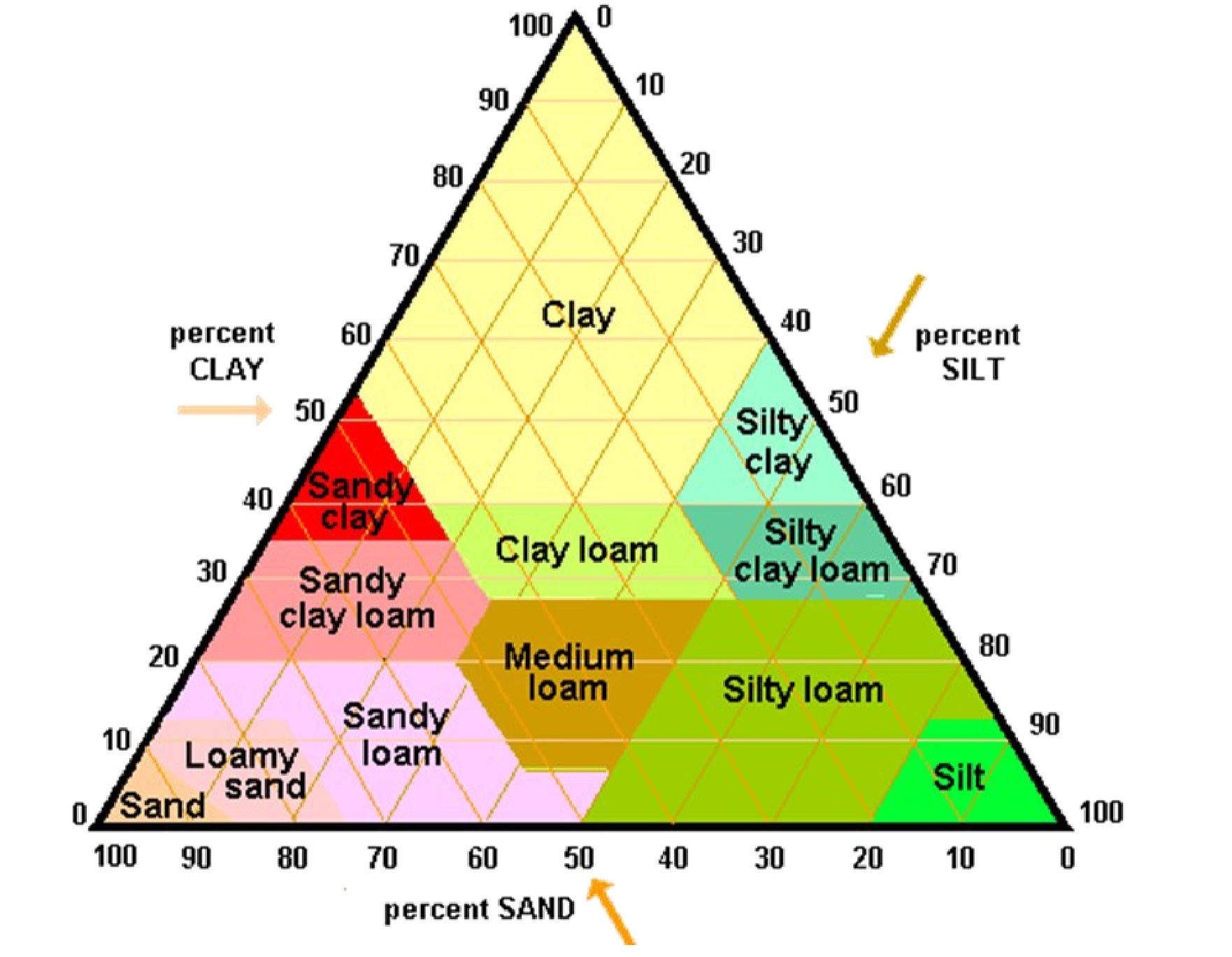
Describe the effects of soil texture on soil properties
large particles- more are space, less capacity to hold water
small particles- less air space, more compact and capacity to hold water
Know advantages and disadvantages of using mineral soils
advantages- CAN promote extra growth and provide nutrients to plants. it is cheap and natural
disadvantages- if it has the wrong combination/ balance of minerals, it can result in nutrient deficiencies and stunt growth. can cause pest and disease problems
List causes of soil compaction
rain hitting bare soil, foot traffic, tillage (human interference on soil for agricultural purposes)
Discuss no-till agriculture
No-till farming is an agricultural technique for growing crops or pasture without disturbing the soil through tillage. No-till farming decreases the amount of soil erosion tillage causes in certain soils, especially in sandy and dry soils on sloping terrain